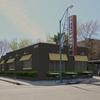On a burning-hot July day, Tom and Cassandra Chavez stood outside the 1947 two-bedroom cottage they have nearly finished renovating.
Their family bought the home in January for $250,000 as a fix-and-flip — joining a growing crew of new investors in East Colfax, a neighborhood at Denver’s far eastern edge. But things weren’t working out just yet.

Despite extensive renovations, the property wasn’t selling at their $325,000 list price. They got bites, until people looked down the block to Colfax — a screaming-fast stretch of pavement that is Denver’s most notorious, whether it’s for unsafe traffic or crime.
“The feedback we’ve gotten from all the lookers is, ‘It’s just too close to Colfax,'” Tom Chavez said.
Now the family is considering a far different move: Tom and Cassandra might just live there. It would be a dramatic transition for a couple of grandparents from suburban Parker — but they only grew more confident as they learned about the ambitious plans that are surfacing along East Colfax Avenue in the next few years.
“I’m hopeful of what I’m seeing and hearing in this neighborhood,” said Cassandra Chavez.
Denver plans to spend at least $150 million to run bus rapid transit down Colfax, a project that could transform the stretch during the 2020s. Meanwhile, the city is buying local properties and shutting down “nuisance” businesses, and local authorities could soon declare an urban renewal area, creating a magnet for developer investment. In the long term, a new city master plan outlines dramatic potential changes, from long-desired sidewalks to experimental approaches to housing and parking.
From a real estate investor’s point of view, East Colfax is the next frontier. But for the people who already live along the avenue, the future’s not so clear. As city planners and private investors canvass the neighborhood, residents are looking with some mix of fear and hope at the Denver neighborhoods that already have been through the gauntlet of gentrification.
“There’s speculators buying up houses, expecting to turn a profit in a few years,” said Nebiyu Asfaw, a longtime organizer of the Ethiopian community in east Denver. “I’m optimistic about the development and the capital coming into the neighborhood, but I’m extremely anxious and fearful of displacement.”
RELATED: Once the site of an East Colfax strip club, Denver selects developers for affordable housing project
In fact, East Colfax is “one of the most vulnerable neighborhoods to gentrification in the region,” according to Jeremy Németh, a University of Colorado Denver researcher who modeled economic changes in Denver along with Alessandro Rigolon of the University of Utah.
It will be one of the greatest challenges of Mayor Michael Hancock’s final term: Can the city improve living conditions and create a new transit line without losing an affordable housing refuge?
Physically, East Colfax hasn’t changed much. It’s lined by single-story strip malls, auto businesses and restaurants. Hundreds of people live in aging motels, a last resort from homelessness.
But the real estate ledgers tell a different story. After the city pursued nuisance cases against the 7-Star Motel and the classic dive Hangar Bar, investor Neil Adam bought both properties. The bar has been reopened as the EastFax Tap, while the motel could become artist-oriented housing, Adam said. Separately, another investor recently bought the Branding Iron Motel.
“I have not seen anybody else take the leap yet,” Adam said, “except for the city.”
Denver has been ramping up its own spending on East Colfax. In 2017, the city paid $1.3 million for a former strip club and $650,000 for the site, a few blocks away, of a former dive bar. Both properties will become affordable housing sites totaling about 155 units.
It was an effort to get ahead of private development, for once.
“We are some of the first people in there buying land for affordable housing and supportive housing, instead of some of the last,” said Irene Aguilar, leader of the city’s Neighborhood Equity and Stabilization Team.

Sending a signal
The government’s efforts to improve the area may accelerate that race with private developers. Next month, the Denver City Council will consider declaring about 1.5 miles of Colfax as blighted, creating an urban renewal area from Monaco Parkway to Yosemite Street.
“Many of these properties along East Colfax just haven’t seen any investment in a very, very long time, and it shows,” said Tracy Huggins, executive director for the Denver Urban Renewal Authority. An urban renewal area gives developers access to tax increment financing, a way to pay for development.
“Indirectly, what it does is it sends a message to the development and investment community that this is a targeted area for investment,” said Carolynne White, a land use and public policy attorney with Brownstein Hyatt Farber Schreck. “… Anecdotally, property values in an area designated for urban renewal tend to increase even prior to the actual investment having occurred.”
That surge of interest and money dislodge some of the auto lots and motels that still dominate the strip, according to Monica Martinez, executive director of the Fax Partnership, a city-supported nonprofit. High-density housing and development, she argued, would be a better use of a transit corridor.

The planned bus rapid transit system would replace Colfax’s center lanes with dedicated lanes and stations for buses, creating a faster and more reliable service. The city already has dedicated $55 million to the project, but it will need to find much more money — and that hasn’t happened yet. Construction isn’t expected to start until 2022 or later.
“Imagine that — this center-running bus and people walking, streaming down these streets, jumping on the bus to go downtown or go to Anschutz,” Martinez said.
Density and displacement?
Currently, developers are limited to building up to three stories along most of the eastern Colfax stretch.
A draft plan for the area suggests that builders could go to five floors and even eight floors at intersections near BRT stops, especially Krameria, Quebec and Yosemite streets. Those highest heights would only be allowed for projects with affordable housing or other community benefits.
But the proposal comes amid a historic power shift on the Denver City Council. Councilwoman Amanda Sawyer said that her constituents are concerned about the potential scale of Colfax development.
“I think that’s the right place to bring that kind of density, and probably no one disagrees with that,” Sawyer said. But she is concerned that “anything over five floors wouldn’t really be reflective of the community as it is now.”
“The question that comes in is whether that’s valuable to the community of people who bought their homes thinking they were buying into a kind of a sleepy, low neighborhood and now are facing the potential of eight-story buildings literally in their backyard.”
Curt Upton, a city planner, said the height limits were a contentious topic and would likely change in the plan’s next draft. The document — known as the East Area Plan — is expected to go for a council vote around year’s end. But the council still would have to approve additional legislation to put the plan into effect.
The public debate is a rare chance to shape East Colfax’s future, Aguilar said.
“We need to make sure their community has a way of making sure their voice is heard loud and clear — I do think that that can change outcomes,” she said, pointing to organizers in Globeville and Elyria-Swansea as examples.
Related Articles
-
The Spot: I watched Wednesday’s debate with friends. Here are my 3 takeaways.
-
East Colfax bus-rapid transit could be nearly a decade away as Denver scrapes for money
-
“Stop killing us”: After a deadly month, Denver cyclists will swarm streets
-
Denver closes Sonny Lawson Park in Five Points, pushing out homeless
-
Denver DA reverses course, announces resignation of prosecutor accused of bullying co-workers
Cornelius Bankston, 14, hopes for a new park — lacking green space, he could only play in the yard. Other residents said they wanted sidewalks and grocery stores. Asfaw, the community organizer, wants the city to create an international culture corridor along Colfax.
But for all the talk of the future, Denver’s housing crisis has already arrived on East Colfax Avenue. Renters make up more than half of East Colfax’s population, and they’re feeling the pain most sharply.
“Over the past year,” Asfaw said, “there’s been an exodus of immigrants and Ethiopians to Aurora.”
On Trenton Street, 21-year-old Moni Harris said his rent has doubled to $1,400 in just a few years. “Horrible,” he said.
To Németh, it’s time for the city to be more proactive in helping current residents and shaping new development.
“I would argue that this is the time to really start to say … we have the right, the responsibility to create the kind of city that we want, ” he said. “And we have the ability to do that now.”


